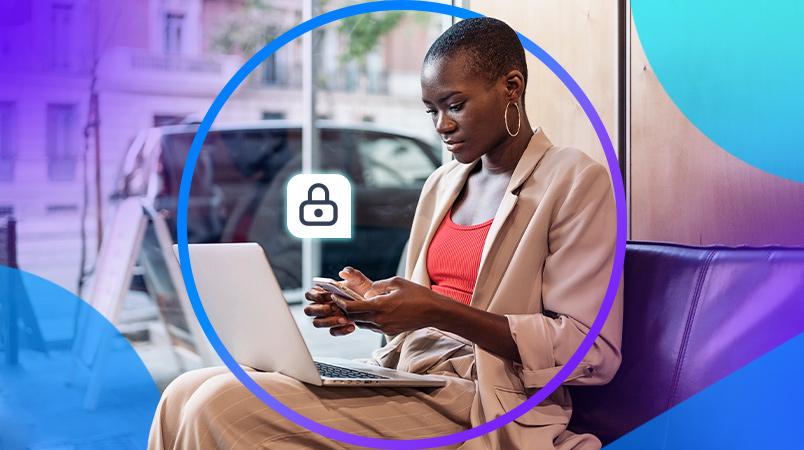Effective marketing involves reaching the right person, at the right time, in the right place.
But consumers face endless distractions, and earning their attention grows more challenging by the day. Marketers need to become increasingly savvy to break through the noise.
With mobile device usage at an all-time high, SMS text messages and push notifications are a massively effective way to communicate important information to customers.
In fact, with a 98% open rate, SMS messages get read more than email.
But how do you choose between push notifications and SMS? And which is more effective?
I. Differences Between Push Notification and Text Message
While push notifications and SMS messaging are two highly effective tools in your marketing toolkit, they are two completely separate tactics that should be executed strategically and thoughtfully. Each has a time and place!
SMS (or short messaging services) allows you to send text messages of up to 160 characters in length to your customers. Push notifications, on the other hand, are brief alerts triggered by an app that a customer has already downloaded. The app doesn’t have to be open for the alert to appear.
So, push notifications vs. SMS: which is better?
It turns out, this isn’t a competition. There are pros and cons to both tactics. For instance, SMS gives you more flexibility in your message. You can add links, and character limits are longer. Delivery is reliable, and customers are practically guaranteed to see your message (remember the 98% open rate from above?). It’s easier to miss a push notification that might only be visible for a few seconds.
That said, push notifications are easier to manage from an opt-in standpoint.
You can start sending push notifications without recipients providing express written consent. Plus, recipients manage app permissions from their mobile devices, and they’re less likely to take the time to go into their settings to tweak the frequency and type of notifications.
With SMS, recipients must provide express written consent and opt in before your business can send them SMS messages. That’s a huge barrier to entry.
II. When to Send a Push Notification
Nearly 49% of people believe “shopping via apps” is a primary reason to use their phones.
With customers so invested in downloading and using retail apps, push notifications are a relatively easy way to start getting your message in front of the right eyes. As soon as a customer has downloaded your app and enabled alerts, you’re in!
Push notifications tend to work well for sales and marketing offers, as well as notifications that are not particularly time-sensitive. These include:
New product offers
Bringing users back to your app with a timely message
Customer feedback requests
Message alerts
Reminders
You can still deliver push notifications, even when the customer doesn’t have your app open. And you can easily integrate other technology (such as geo-targeting) to make sure you’re reaching them at a relevant time and through their preferred method.
For instance, Target has been known to send its in-store customers push notifications for promotions and sales. For example: “Just for you: Take $30 off your $100 purchase of nursery items — today only.”
III. When to Send an SMS Text Message
SMS messages have their own benefits.
For one, they don’t require an internet connection. Plus, you can provide longer, more complex messages (think hyperlinks, GIFs, and videos) vs. the limited, simple characters of a push notification.
And with 90% of text messages read within the first three minutes of delivery, you’re almost guaranteed to get customer eyes on your message this way.
SMS text messages work particularly well in the following use cases:
Travel alerts
Delivery status updates
Booking confirmations
One-time password (OTP) login codes
Appointment and payment reminders
Fraud alerts
For example, let’s say you own an exercise studio and want to gauge instructor effectiveness. You might send a message to attendees post-class that says, “Thanks for attending today’s power shred class with Carli! Please rate your experience from one to five, with five being the best.”
Or, maybe you have a global travel company that struggles with standardizing global customer interactions and bookings. SMS can be a reliable way to relay that information:
“We have confirmed your reservation for June 6-10. Please contact the concierge at 123.456.7890 when you arrive. We look forward to seeing you soon!”
IV. Send and Receive SMS Messages Worldwide With CM.com
SMS messages and push notifications are both powerful tools, depending on your use case and specific company goals.
If you decide to use SMS as your marketing channel, CM.com’s SMS Gateway API aggregates all the disparate components of an SMS marketing strategy into one comprehensive solution.
Manage all your messaging channels — including SMS, WhatsApp, Apple Messages for Business, and more — in one Business Messaging API.
With more than 150 direct carriers worldwide, SMS Gateway API will deliver your messages promptly and effectively. Plus, our real-time analytics tool gives you an on-demand, detailed overview of your traffic, so you can track and optimize flows.
And with a number of software plugins and extensions, you can extend your platform’s functionality with the touch of a button.
Ready to enrich your mobile messaging capabilities with CM.com’s SMS Gateway API?









